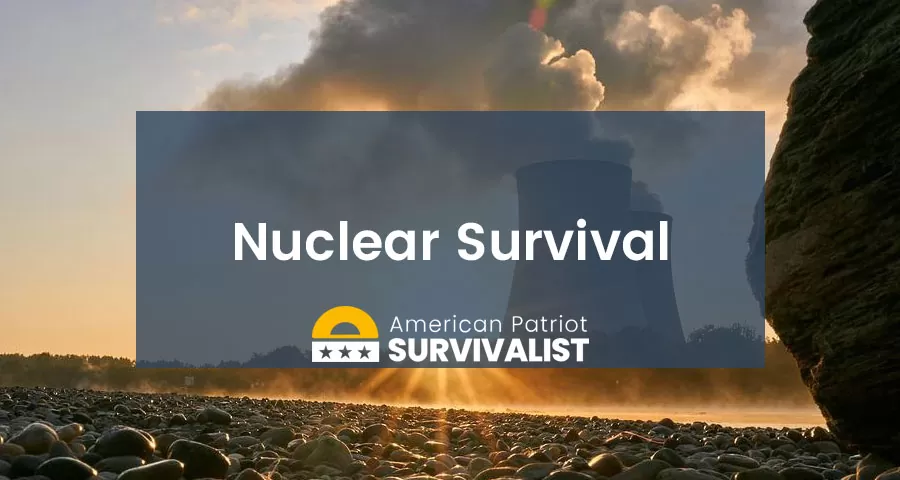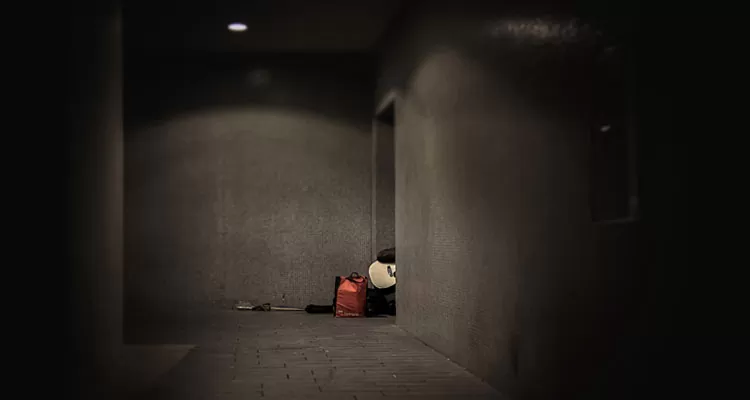
Short-lived radionuclides outside the body, typically restricted to the area downstream of the weapon burst site, account for most of the radiation risk from nuclear explosions. This radiation risk is caused by radioactive fission particles with half-lives ranging from a few hours to a few months, as well as soil and other materials that were rendered radioactive from the strong neutron flux and were present close to the explosion.
Nearly all of the particles degrade quickly. Even yet, areas (hot spots) beyond the blast radius of the bursting weapons would be radioactively contaminated by long-lived radioactive isotopes such as strontium 90 or cesium 137, preventing the survivors from entering such locations. For up to five years following the strike, this lingering radiation risk could seriously threaten the lives of nuclear war survivors.
It is difficult to forecast the quantity for several reasons, such as the quantity and intensity of the radioactive fallout. The weapon’s yield and design, the height of the explosion, the type of surface underneath the bursting point, and the meteorological circumstances, such as wind speed and direction, are some of these.
Whenever the fireball does not hit the ground, an air burst can cause little fallout. However, the radioactive fallout from a nuclear explosion that occurs at or around the earth’s surface can cause serious contamination.
What Happens If A Nuclear Bomb Detonates?

Risks To Humans
Radiation from nuclear fallout can harm people’s health; particularly, it causes cancer. A specific quantity of radiation is released as radioactive substances degrade. There is a chance that these chemical changes in cells, which have the potential to kill or alter cells, will occur when individuals are subjected to this radiation. Radiation can trigger cancer by destroying the DNA stored in cells, and it can also cause congenital disabilities in infants owing to messing with an individual’s genetic composition. A unit of measurement called the gray, characterized as the uptake of one joule of energy for every kilogram of tissue, is used to assess the quantity of radiation the body is exposed to.
How Long Will It Last?
The radionuclides found in the fallout are often very diverse. Some have large half-lives, such as cesium-137, which has a half-life of 30.17 years, and remain in the environment for extended periods. For example, iodine-131, which has a half-life of 8 days, has relatively short half-lives and decomposes in minutes or days. There is very little radioactivity left in the environment today from weapons experimentation in the 1950s and 1960s.
Fallout’s Radius
According to AsapScience, a 1,000-kiloton nuclear bomb may cause third-degree burns approximately 5 miles away, second-degree burns approximately 6 miles away, and first-degree burns approximately 7 miles away. Also possible is temporary blindness for anyone up to 53 miles away.
Nuclear Winter Risks
According to some scientists, a nuclear war explosion would likely cause a “nuclear winter,” which would cause environmental destruction. Scientists have long been aware of how harmful nuclear explosions’ light, blast, heat, and radiation are, but their indirect consequences on the environment have received little attention.
Researchers believe that nuclear warhead explosions will result in numerous, enormous fireballs, which will be the primary cause of nuclear winter. Any cities or forests in their path would experience enormous, uncontrollable fires (firestorms). These fires would send up enormous plumes of smoke, dust, and soot that would be heated by the fires themselves and rise to great heights where they may drift for days before falling back or being rinsed out of the sky and falling to the ground.

Risk To Food And Water Supplies
Nuclear explosions are likely to cause RADIOLOGICAL pollution of food and water. Considering how the general public reacted to nuclear tests, it is apparent that military personnel and civilians will experience difficulties with the monitoring and decontamination issues that influence food and water.
Getting Ready for a Nuclear Strike
Tablets Of Potassium Iodide
A nuclear power station might release a lot of radioiodine into the air in the event of a radiation emergency. This might harm your thyroid gland, and it might develop thyroid cancer in the future. Radioiodine can be consumed or breathed in, or it can be found in some foods. Your thyroid gland is shielded from damage when you use the KI pill.
Protect Devices And Your Home Against Emp
As it turns out, aluminum foil may be used to create a shielding that is quite effective in protecting against EMPs. The radios were shielded from all 9 million watts of RF energy using regular heavy-duty aluminum foil.
One of the most well-liked strategies for SHTF electronics protection against EMP damage is using faraday bags. Faraday bags sometimes called faraday boxes or even faraday cages, are typically formed of a flexible metallic material that can filter out electrostatic radiation.

Move To An Underground Or Nuclear Fallout Shelter As Soon As Possible
Specifically designed to shield humans from radioactive fallout or debris following a nuclear explosion, fallout shelters are enclosed spaces. Throughout the Cold War, numerous shelters of this nature were built.
In the aftermath of a nuclear explosion, vaporized material in the fireball is subjected to the explosion’s neutrons, absorbs them, and turns radioactive. It produces dust and light sand-like materials which resemble ground pumice when this substance condenses in the rain. In addition to gamma rays, the debris emits alpha and beta particles.
A serious hazard results from a large amount of this extremely radioactive material falling on Earth, which exposes anything in its path to radiation. Until radioactivity has degraded to a safe level, a fallout shelter is made to let its occupants limit their exposure to hazardous fallout.
Conclusion
The most lethal weapons on earth are nuclear ones. It is possible to destroy a city, which might result in the death of millions of people and endanger the environment and the lives of coming generations due to its long-lasting devastating effects.
A room in the center of your house or the basement is the safest location during a radiation emergency. This section should contain as minimal windows as feasible. Your safety will increase with the distance between your shelter and the windows. It’s important to plan.